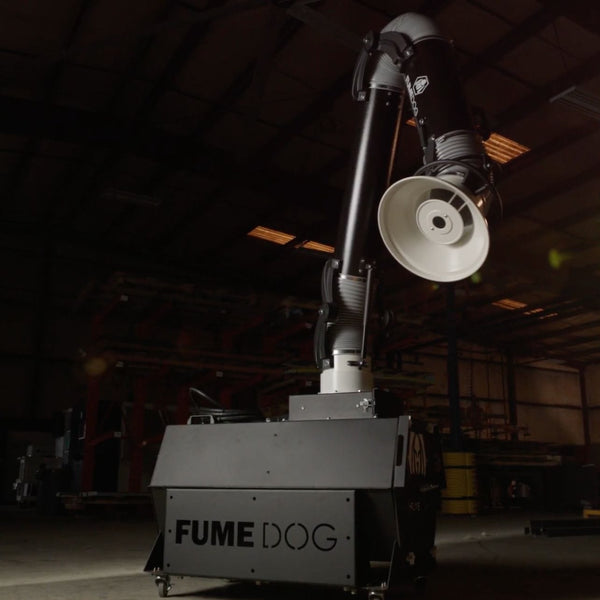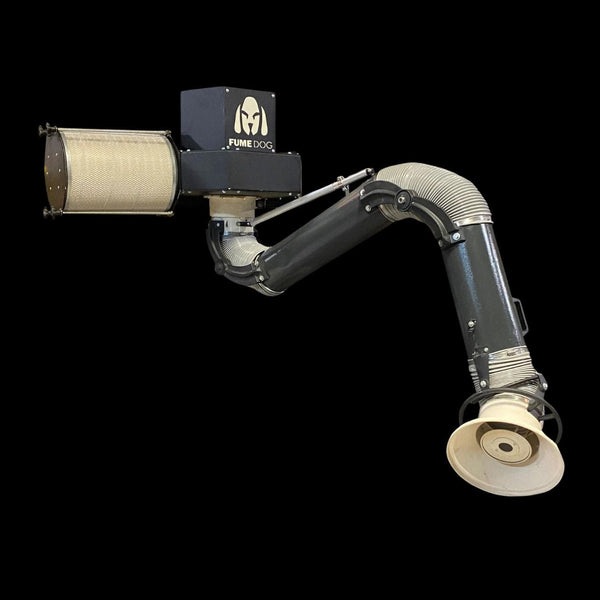
Welding is both a rewarding career choice and fun weekend activity for many Americans. Metalworking allows for creativity and engaging craftsmanship, but it’s not without its dangers. Welding uses high-powered flames that produce heat and sparks that can cause serious, physical injuries. Additionally, toxic fumes, a byproduct of welding metal items, can easily damage your internal organs with prolonged exposure.
Of all the dangerous toxins, Hexavalent Chromium is potentially the most dangerous. Here is what you need to know about Hexavalent Chromium and how to protect against its harmful symptoms to ensure the safety of your employees, your students, and yourself.
What Is Hexavalent Chromium?
Hexavalent Chromium, or Cr(VI), is a valence state of chromium that is often produced during industrial processes. Most alloy steel is combined with Chromium metals to increase the durability and longevity of finished products. When using heat-cutting methods, CR(VI) is quickly released into the immediate air, posing a massive threat to your and others' health. Hexavalent Chromium is a known carcinogen, meaning it’s more prone to causing cancers. Additionally, it’s capable of damaging your kidneys, liver, skin, and respiratory system. In short, it’s the most toxic state of Chromium.
Hexavalent Chromium is also used for dyes, paints, and colored plastics, making it a common hazard in almost any industry job. It’s even used for decorative coatings, thanks to its excellent anti-corrosion properties. Unfortunately, Cr(VI) presents in three different forms: Elemental Chromium, Trivalent Chromium, and the most common, Hexavalent Chromium. The latter is most often produced from welding processes, making it the biggest threat to metalworking individuals.
How Much Exposure Is Dangerous?
As stated before, Hexavalent Chromium is a cancer-causing toxin that affects nearly every vital organ in the body. Lifetime welders who are exposed to Cr(VI) for long periods of time face health complications in their later years. Luckily, The Occupational Safety and Health Administration, or OSHA, actively combats dangerous exposure to Cr(VI) with stringent rules and regulations. Every certified welding business or school must follow these guidelines to ensure total safety while in the workshop.
According to OSHA, the Permissible Exposure Limit (PEL) is 5 µg/m3 over an eight-hour shift per person. This means around five micrograms of Cr(VI) per cubic meter. This is the safe limit of exposure for individuals. However, the standard used to be 52 µg/m3—thankfully, the rules have changed in favor of welders and their well-being. OSHA also uses an Action Level exposure limit (AL) to measure the total Cr(VI) concentration present in the air. This level is set at 2.5 µg/m3 over an eight-hour shift and accounts for all persons within a workspace.
Welding workshops use various instruments that actively measure the Cr(VI) contaminant levels, keeping everyone updated on their working conditions. It’s best practice to stay well below these exposure limits, as even OSHA’s accepted PELs and ALs pose health threats over time.
Signs of Illness and Injury
It’s important to know the safe exposure levels of Hexavalent Chromium, yet it’s equally vital to recognize the symptoms of Cr(VI) poisoning. Welders who handle stainless steel and nonferrous chromium alloys are most exposed to the toxin, making them the most likely to suffer from illness or injury. The signs of overexposure to Cr(VI) and usually quite obvious and include the following:
- Respiratory irritation
- Abnormal and painful sneezing
- Strained coughing
- Wheezing and shortness of breath
- Symptoms of asthma
- Persistent bloody-nose episodes
- Nasal perforation
- Skin and eye irritation
- Symptoms of lung cancer
Other injuries that occur over exceptionally long exposures include the development of sores and ulcers throughout the body. Most commonly, these sores appear on the skin or inside the mouth of long-time welders. If you, a student, or an employee display any of these symptoms or feel unusually unwell after long shifts, they are most likely suffering from Cr(VI) poisoning. Immediate medical intervention is required in this instance, as well as the implementation of better preventative methods within the workshop.
How To Prevent Dangerous Working Environments
Out of all the factors for what you need to know about Hexavalent Chromium, preventive measures are the most crucial. Proactively protecting employees and students from overexposure is the easiest way to combat injury, illness, and even death. Ultimately, the best defense for toxic fumes in the workplace is proper PPE, advanced devices, and regular inspections.
Most welders are familiar with the standard PPE required while working in dangerous settings. These include light-blocking face shields or masks, fire-resistant clothing, steel-toed boots, insulated gloves, and a respirator. Not only do these items protect you from flames, sparks, and heat, but they also prevent overexposure to Hexavalent Chromium, among other harmful toxins.
In addition to proper PPE, a welding workshop must possess proper ventilation with quality equipment that recycles fumes. The easiest way to achieve optimal ventilation is by opening windows and doors—this method is best for weekend enthusiasts working out of their garage. For larger-scale projects, adequate HVAC systems are required for steady, clean airflow. Fume Dog offers additional protection with our advanced down-draft tables, portable, and wall-mounted welding fume extractors. These extractor devices actively clean toxic air, providing a healthy working environment. We also carry helpful attachments to optimize the abilities of your fume extractor systems.
Staying prepared for dangerous working conditions means you must conduct regular inspections. Primarily, these scheduled walkthroughs ensure your machinery is well-maintained and less likely to fail or cause harm. Furthermore, inspections reveal potential ventilation or hazardous issues that may arise during standard workdays. Oftentimes, overexposure to Cr(VI) is caused by poor working environments, along with an increased risk of physical injury. Consider hosting regular training sessions and refreshers for your employees or students, ensuring they understand the risks of Hexavalent Chromium exposure and the best ways to prevent inhalation. Something as simple as a misused PPE item can lead to Cr(VI)-related illnesses, so keep your workforce educated.
Operating a small welding business, running a metalworking school, or simply indulging in some weekend craftsmanship is rife with dangers and hazards. However, proper preparation, education, and preventative measures are the best way to ensure the safety of yourself and others. Furthermore, understanding how Hexavalent Chromium is produced and how it affects our health is crucial for combating overexposure and injuries. Always follow OSHA guidelines when handling any potentially toxic materials, and pursue medical intervention when illnesses occur.






